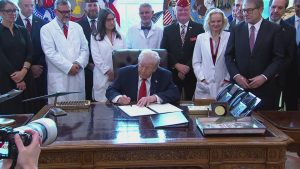NASA’s mission has lowered the threshold for humanity’s chances of existence on the moon after finding more water on its surface.
Previously thought of as a barren land with no prospects of life, researchers are finding more water sources on the planet each passing day.
NASA’s Moon Mineralogy Mapper detected the presence of water and hydroxyl molecules scattered around multiple lunar regions.
More Details
Researchers analyzing data from the Chandrayaan-1 spacecraft’s Moon Mineralogy Mapper (M3) have discovered that water and hydroxyl are present across all latitudes on the Moon.
The study, published in the Planetary Science Journal, indicates that lunar water was likely exposed during cratering events and it has been gradually destroyed by solar wind radiation.
The scientists previously thought the water was only available on the polar regions, the new research contradicts that by arguing that it is scattered all over the surface.
Exploiting and extracting these water-rich regions will prove to be hectic but that will require further geological studies.





